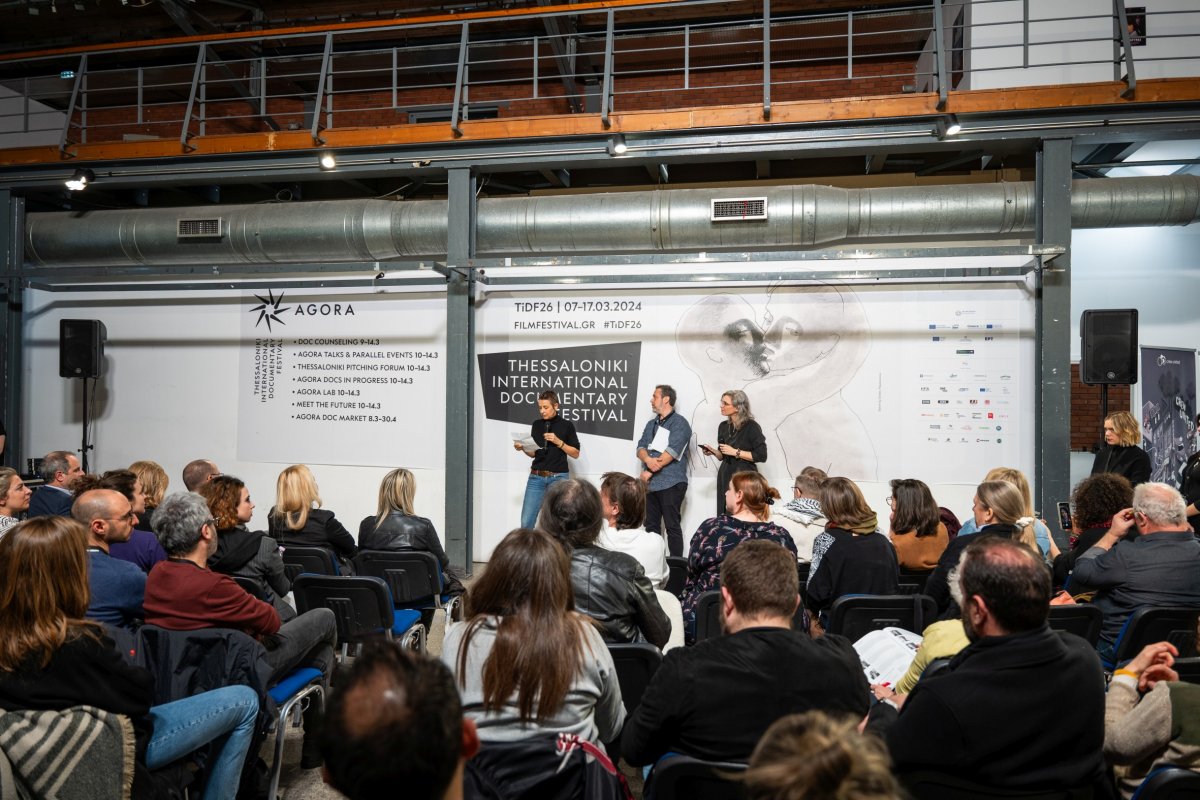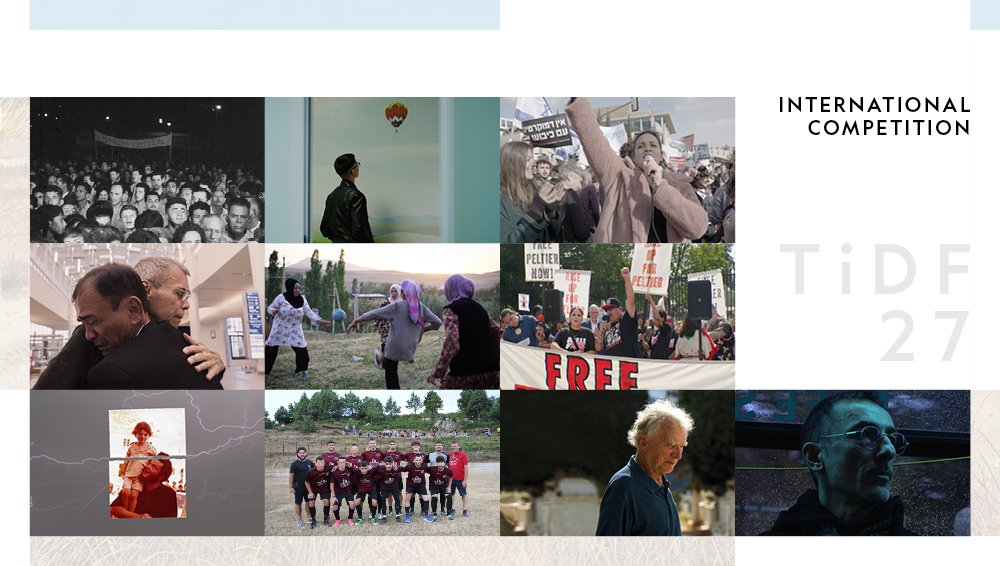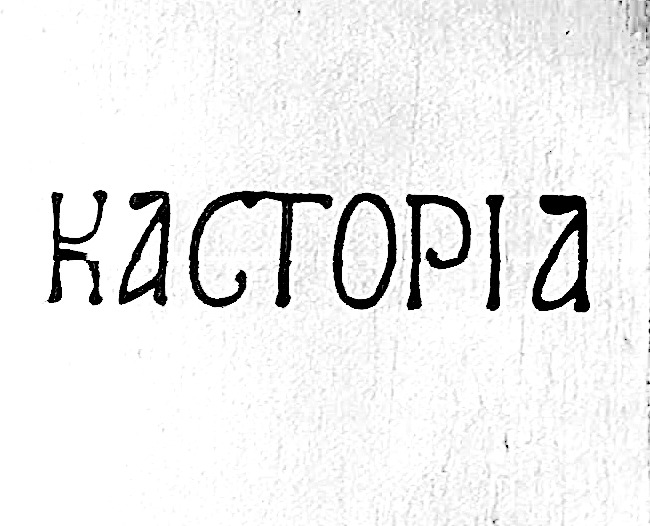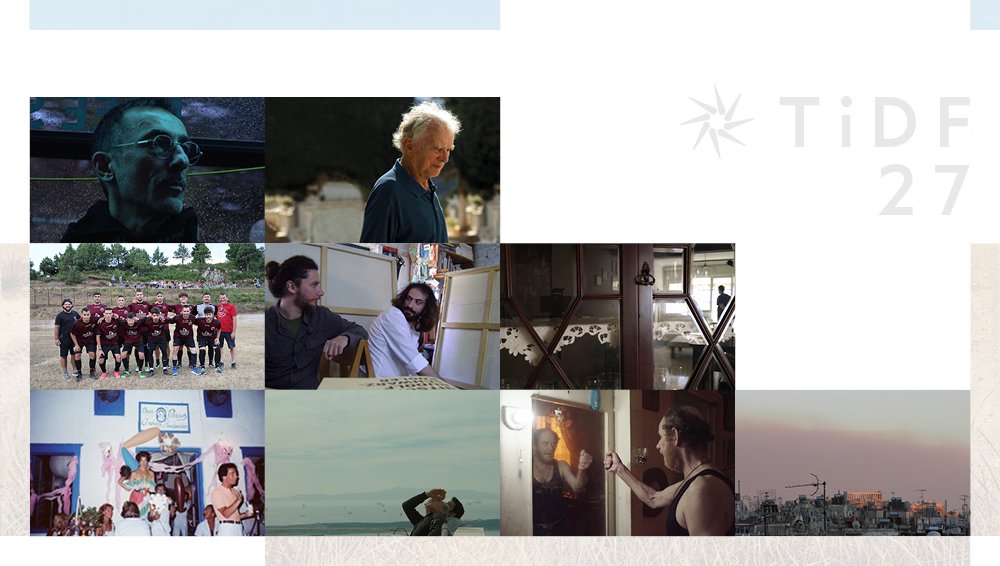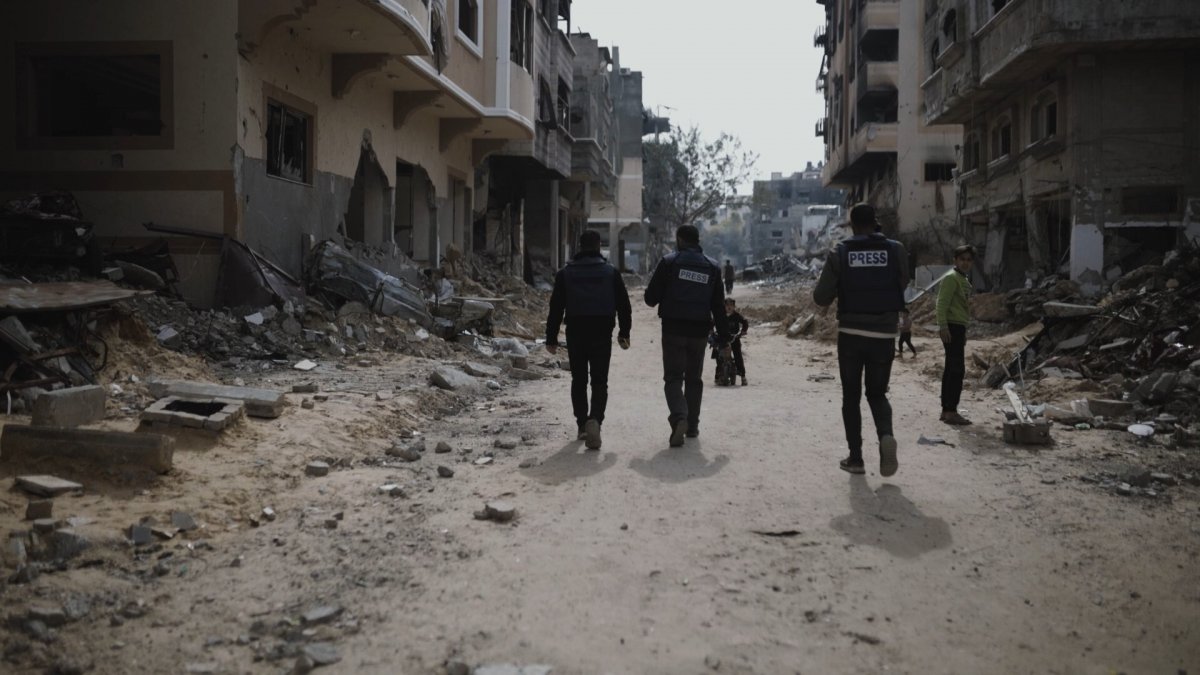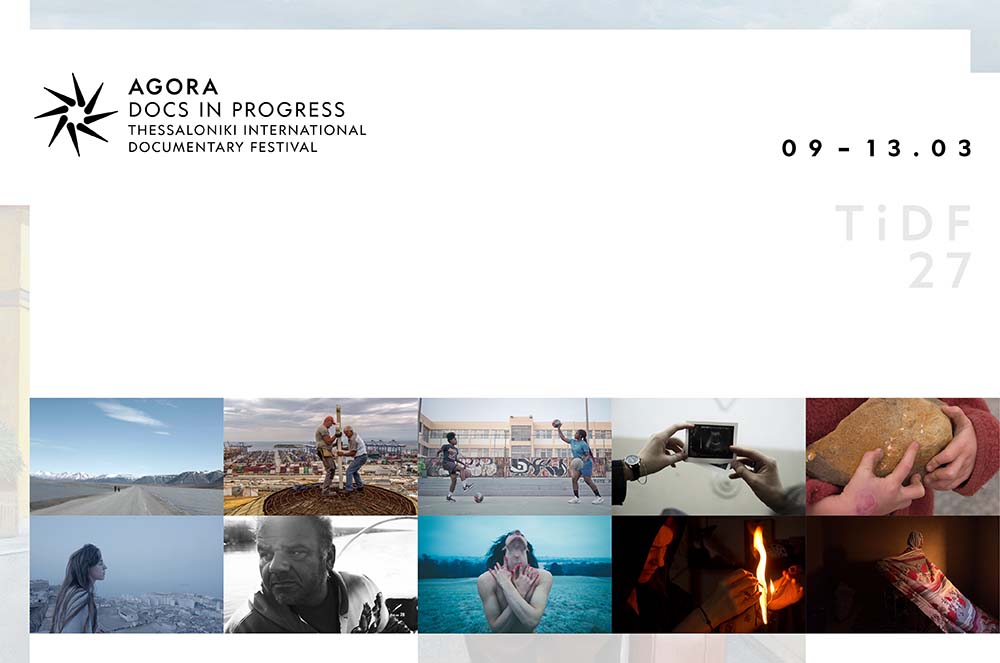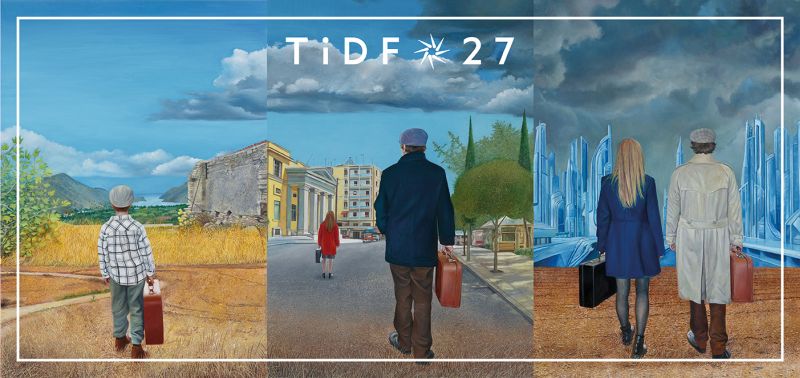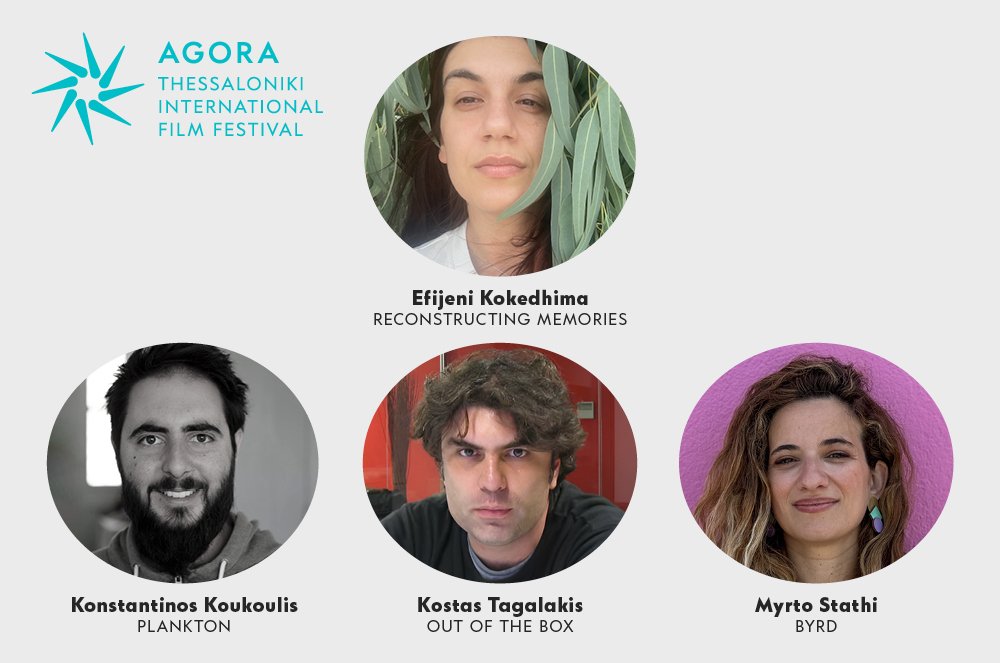On Friday, November 8th at the Pavlos Zannas theater, Panos H. Koutras delivered a masterclass titled “Queer Before It Was Cool,” which explored queer identity in his cinema, within the framework of the “Iconic Talks powered by Mastercard” initiative. The acclaimed Greek filmmaker had a discussion with the journalist, Alexandros Diakosavvas, and the audience on the unknown aspects of his work, his valuable experiences from his 25 years of work in Greek cinema, the queer representations in his films, as well as the influences and references that have shaped his directorial gaze.
Initially, Alexandros Diakosavvas thanked Panos H. Koutras: “The first time I saw Strella, in 2009, coincided with my own coming out, at a time when concepts such as the LGBTQIA+ inclusion and visibility, which are now widespread, were not at all part of the public dialogue. I felt that this queer universe, in which I belonged, has a bizarre and powerful beauty for the very first time.”
Alexandros Diakosavvas initially asked Panos H. Koutras if he felt lonely growing up, especially during his adolescence. “I cannot say I was lonely. I had a large family, a lot of friends, and I was extremely extroverted as a child. I would say that I wasn’t a typical example of a queer person. I matured and bloomed in terms of my sexuality quite early. The suffering I experienced overall due to my sexual identity lasted no more than two months. Thanks to my character, I processed it quickly, and delved into this wonderful world. I thought: ‘I’m going to have fun!’ And trust me, I did,” Panos H. Koutras said.
“However, I have the sense I am an isolated case. Most people didn’t have the same luck. Most people in the queer community had a very hard time. Circumstances and situations, at least in our own ‘corner of the world’ here in Greece, have changed very much. In the past, from the moment someone became aware of their identity it was impossible to communicate it. And in this difficult endeavor, we had no allies – not even our family,” he added.
Then Alexandros Diakosavvas encouraged him to speak about his years as a university student in London: “I was glad to be away from my family and the oppressive Greece, which was traversing a couple of dark years after the dictatorship. So, I arrived at the England of Margaret Thatcher, at a country which was just getting out of a huge crisis, and where the thick British misery thrived. But everything was so fascinating in London. And I was lucky because I encountered the right people. All the friends I made during those years still have a place in my life,” he stated.
Next, Panos H. Koutras talked about another European capital that starred in his younger years; Paris: “I found myself in Paris during a riveting decade, the so-called years of Mitterrand in the 1980s, when we felt like the world was changing. I felt that finally new and different subcultures took up space and found their voice. My years in Paris were a huge and never-ending party. Unfortunately, this party was overshadowed by the threat of AIDS. It was, I would say, a party in hell: I lost 80% of my friend group to AIDS. It was fortunate that my predecessors didn’t go through something similar. In a way, it was akin to an atypical World War III. Young people marching into an unequal battle. I left Paris and returned to Athens to escape this threat. My attempt at evading it was chimeric: AIDS might have been delayed, but ultimately it did reach Greece, as well. The one question I agonize over is: What would this world truly be like, if so many emerging artists hadn’t died so ingloriously?”
As for his references and sources of inspiration, Panos H. Koutras stressed the following: “As a young gay artist, I was utilizing my references so I could express myself. I discovered a lot of things to relate over in the face of Andy Warhol. I also found some more in the face of Paul Morrissey, and in particular, I’m referring to his trilogy, Flesh (1968), Trash (1970), and Heat (1972). I was extremely inspired by independent American cinema.”
Subsequently, he recounted the events that led to the creation of his first feature-length film, The Attack of the Giant Moussaka: “I had desire and a lot of footage, but no money. Finding funding in Greece was impossible. So, I decided to make the film myself using my own expenses, and the help of my friends; Ionas Konstas and Marianna Papageorgiou. It took me four years. The first filming phase took place in the summer of 1995, and they continued at Christmas the following year, from 1997 until 1999 I did the editing with Elissavet Chronopoulou’s aid, while I was also adding special effects. I was lucky the Papazoglou studio functioned, as it had access to technology quite advanced for that time. The film took a long time to be completed. I felt that life goes on and that we lag behind, filming Moussaka!”
“The protagonist, Tara, was a man dressed as a woman. In essence, it is an homage to Divine from the universe of John Waters, who I also love. In my mind, Tara was Divine’s fake Greek daughter. I remember that during the filming, catastrophes in Greece were constantly occurring: droughts, then floods and a major earthquake. The attack of the giant moussaka was a natural continuation of these devastations. I remember an article in Le Monde which noted that the film foreshadowed the economic crisis. The film was loved very much in France, as well as in Japan. Unfortunately, something similar never happened in Greece,” Panos H. Koutras stated.
“The film bamboozles. You don’t understand if it exercises social or political satire. It intertwines the pompous people with trash personas. For me, it was a riveting experience. It was me endeavoring to connect worlds with no correlation. I will never forget that the film, even if it was never distributed, was screened for one single week in Danaos Cinema. It was in the last week just before the Millenium, from December 24th to 31st, 1999,” he added.
Next, referring to his film, Real Life, Panos H. Koutras said: “After finishing Moussaka and thanks to it, I received funding from the Greek Film Centre to film Real Life. It was a pivotal social juncture for Greece, at the time that as a response to the social inequalities, we rallied and created the movement that later emerged in the 2005 Athens Pride. Real Life made its debut a year earlier, in the fall of 2004. In this golden year for Greece, Real Life lit up Acropolis. Mrs. Kalliga, however, built it even better than before!”
For Strella, the acclaimed Greek filmmaker stated: “It was a very old idea I had along with Panayotis Evangelidis, and I thought the time had come to realize it. I knew it was nearly impossible for such a film to be shot in Greece. I had to find a young trans woman appropriate for the role. I was adamant about this. The casting took an entire year, but I finally discovered Mina Orfanou, and I was ready to bring the film to life. Of course, I didn’t receive any funding, but I became the producer and distributor of my own films. The film embarked on a journey to the Berlin Film Festival, a fact that brought joy to both me and the entire team.” For his part, Alexandros Diakosavvas pointed out that the film contributed to trans visibility and to the revival of the new Greek cinema.
On his next film, Xenia, Panos H. Koutras stated: “I think I like challenging myself with difficult films because in Xenia I found it extremely difficult to track down two immigrant children originating from Albania. I was searching for an entire year. As demanding as this kind of cinema is, I choose it because I can’t do anything else. I craft personal films, I’m queer, and that follows me in cinema. Afterall, filmmaking is incredibly grueling. Therefore, when you start this process, it’s better to express what you truly desire.”
Regarding his most recent film, Dodo, he explained: “It’s a film that revolves around the major changes occurring in Greece during the last years. With this film, I understood that the world is divided between those who know what dodo is, and those who don’t. It is a bird that disappeared without cause. I took it and dressed it in my favorite colors. In my eyes, it was the queerest bird!” he emphasized.
When asked by Alexandros Diakosavvas whether the queer concept is the ticket to commercial success, Panos H. Koutras was assertive: “No. Perhaps the media have this impression because it is an interesting subject that enthralls audiences. As for film production, which is the only thing I can speak on, I tell you with certainty that this interest can’t be translated as profit. In major film festivals, the LGBTQI+ films don’t surpass a meager 10%.”
Finally, in response to an audience question about the way he deals with his actors, he replied that each one constitutes a distinct entity and as such they require a different approach. “There is no specific rule. On my part, I feel a profound love and respect for an actor’s art, sentiments that stem from the seminars Andreas Voutsinas delivered in Paris. I wholly dedicate myself to my actors, ensuring that the line of communication with them is open. I create films delving into characters and thus the actor always comes first,” he concluded.
Shortly before the masterclass concluded, the filmmaker gave the floor to some actors that have starred in his films, such as Angelos Papadimitriou, Mariella Savvidou, and Grigoris Patrikareas, among others, who shared their own perspective about the way Panos H. Koutras works with his actors, but also the love with which he surrounds them.



